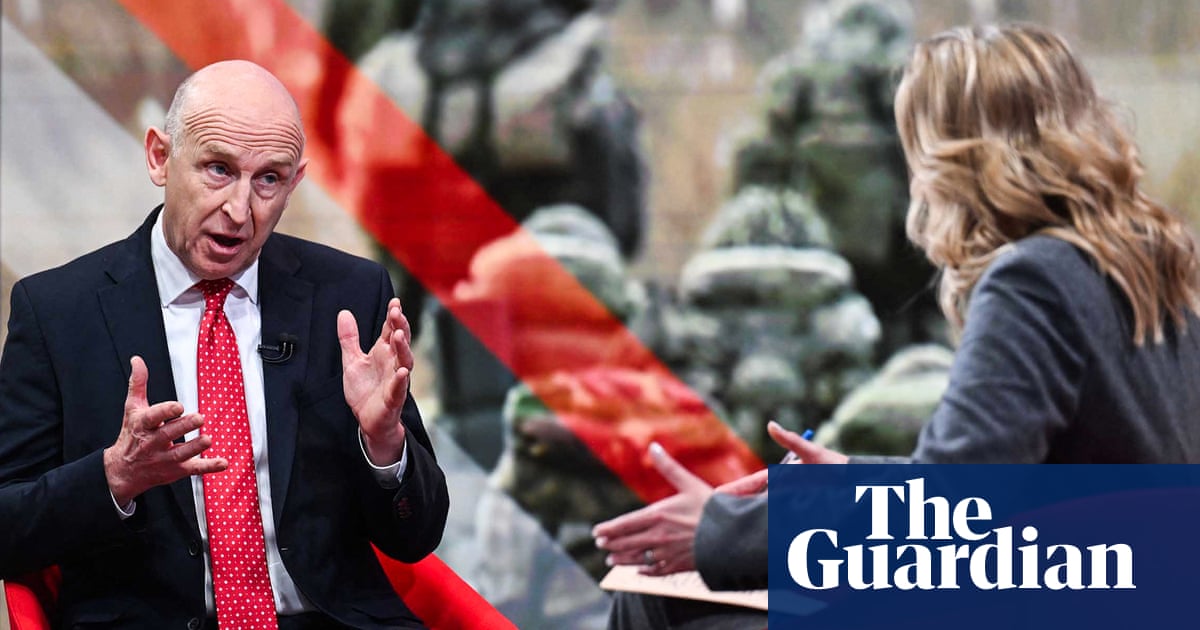Plans to increase the size of the British Army to deal with new threats identified in Monday’s strategic review will be deferred until after the next election, the UK defence secretary has said.
John Healey had been hoping to secure an increase of a few thousand from the current target of 73,000 troops, but in a BBC interview he acknowledged it would take several years before a recruitment drive would be put into action.
The army is at its smallest for more than 300 years and figures out last week showed that more people were leaving. The number of full-time trained soldiers stood at 70,860, below the target.
Speaking to Laura Kuenssberg, Healey said there had been “15 years of a recruitment and retention crisis in our armed forces” and that the previous Conservative governments had “missed targets in every year, in every service”.
He conceded that Labour had so far failed to turn the situation around, despite talk of a significant peacekeeping deployment in Ukraine. “We’ve still got more people leaving than joining,” he said.
“The first job is to reverse that trend, and then I want to see in the next parliament our ability to start to increase the number” of soldier, apparently deferring any increase until after 2029.
In opposition, Healey was a fierce critic of the diminishing size of the army and called for cuts to troop numbers to be halted. Reports had indicated he was hoping to secure an increase in the target size to 76,000, which would cost up to £2.5bn.
His comments on Sunday, however, suggest the target will not be increased promptly, though calls to increase troop numbers will grow if an Anglo-French led “reassurance force” is deployed in Ukraine as part of a long-term ceasefire or peace deal to end the war in the country.
A UK contribution to a force of up to 30,000 could be up to a brigade of several thousand, which will need a total number of soldiers around three times greater so the military presence can be sustained through rotation.
Healey also said he wanted to improve pay and conditions for serving personnel. Pay is scheduled to increase by 4.5% for most ranks this year, and £1.5bn has been allocated as part of the strategic defence review to improve service accommodation, including emergency action on the 1,000 worst homes.
Sign up toFirst Edition
Our morning email breaks down the key stories of the day, telling you what’s happening and why it matters
after newsletter promotion
The review, out on Monday, will say the UK faces “a new era of threat” from an aggressive Russia, a rising China and new technologies such as drones and artificial intelligence in the hands of adversaries.
But it is not expected to make extra spending commitments beyond those already announced by Keir Starmer in February. At that time, the prime minister said the UK would spend 2.5% of GDP on defence by 2027, up from the current 2.33%, and increase it to 3% during the next parliament.
Discussions about longer-term budgets are expected to take place at the Nato leaders summit later in June. The alliance’s secretary general, Mark Rutte, has proposed that members agree a target of defence spending of 5% of GDP by 2032, of which 3.5% would be hard military spending and the rest cyber and infrastructure development.
